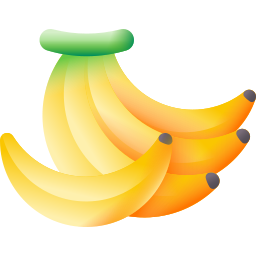
Bananas are one of the most popular fruits worldwide, often celebrated for their convenience, taste, and nutritional value. Whether sliced into cereal, blended into smoothies, or simply eaten on-the-go, bananas are a staple in many diets. But have you ever wondered exactly how many calories are in a banana? Understanding the caloric content of this ubiquitous fruit can help you make informed dietary choices.
The aim of this article is to provide you with detailed information about the calories found in bananas and to explore their overall nutritional benefits. We’ll delve into the specifics of banana calories, how they fit into a balanced diet, and why this fruit is a nutritional powerhouse despite its relatively low calorie count. By the end of this article, you’ll have a comprehensive understanding of banana calories and how they can contribute to a healthy lifestyle Calorie deficit Calculator.

In this article, we’ll start by breaking down the nutritional profile of bananas, focusing on their caloric content and macronutrient composition. Next, we’ll explore the various health benefits that bananas offer, from boosting energy levels to supporting digestive health. We’ll then compare the caloric content of bananas to other popular fruits to give you a clearer perspective on their nutritional value. Additionally, we’ll provide practical tips on how to incorporate bananas into your diet in a healthy way, including some delicious and easy recipes. Finally, we’ll address common myths and misconceptions about bananas and their calorie content, backed by scientific evidence.
How many calories in a banana?
Serving Size:
1 medium (7″ to 7-7/8″ long) (118g)
Amount Per Serving:
- Calories: 105
- % Daily Value:
- Total Fat: 0.4g (1% Daily Value)
- Saturated Fat: 0.1g (1% Daily Value)
- Trans Fat: 0g
- Polyunsaturated Fat: 0.1g
- Monounsaturated Fat: 0g
- Cholesterol: 0mg (0% Daily Value)
- Sodium: 1.2mg (0% Daily Value)
- Total Carbohydrates: 27g (10% Daily Value)
- Dietary Fiber: 3.1g (11% Daily Value)
- Sugars: 14g
- Protein: 1.3g
- Vitamin D: 0mcg (0% Daily Value)
- Calcium: 5.9mg (0% Daily Value)
- Iron: 0.3mg (2% Daily Value)
- Potassium: 422.4mg (9% Daily Value)
- Caffeine: 0mg
- Total Fat: 0.4g (1% Daily Value)
Bananas are extremely healthy and contain several important nutrients. A medium banana only contains 105 calories, on average. However, more than 90% of a banana is composed of carbs. People generally know that bananas are very nutritious, but many wonder how many calories and carbs they actually contain. This article answers those questions.
How Many Calories Are in Various Sizes of Bananas?
Bananas contain around 100 calories, but this can vary by the fruit size and how you consume it. Below are the calorie contents of standard banana sizes:
- Extra small (shorter than 6 inches, 81 grams): 72 calories
- Small (6–7 inches, 101 grams): 90 calories
- Medium (7–8 inches, 118 grams): 105 calories
- Large (8–9 inches, 136 grams): 121 calories
- Extra large (9 inches or longer, 152 grams): 135 calories
- Sliced (1 cup, 150 grams): 134 calories
- Mashed (1 cup, 225 grams): 200 calories
If you’re unsure about the size of your banana, you can estimate that an average banana contains about 100 calories. About 93% of a banana’s calories come from carbs, 4% from protein, and 3% from fat.
How Many Carbs Are in a Banana?
Bananas are almost exclusively composed of water and carbs. People who watch their carb intake are interested in knowing the carb content of their food. Here is the carb content of standard banana sizes:
- Extra small (shorter than 6 inches, 81 grams): 19 grams
- Small (6–7 inches, 101 grams): 23 grams
- Medium (7–8 inches, 118 grams): 27 grams
- Large (8–9 inches, 136 grams): 31 grams
- Extra large (9 inches or longer, 152 grams): 35 grams
- Sliced (1 cup, 150 grams): 34 grams
- Mashed (1 cup, 225 grams): 51 grams
A banana also contains 2–4 grams of fiber, depending on its size. You can subtract 2–4 grams if you are looking for the “net” carb content (net carbs = total carbs – fiber). Additionally, a banana’s ripeness may affect its carb content. Generally, green or unripe bananas contain fewer digestible carbs than ripe bananas.
Unripe (Green) Bananas Contain More Resistant Starch
The main nutrient in bananas is carbs, but the carb composition changes drastically during ripening. Unripe bananas contain high amounts of starch, and some of it is resistant starch. Because the starch in a banana is converted to sugar during ripening, yellow bananas contain much less resistant starch than green ones.
Resistant starch is a type of indigestible carbohydrate that escapes digestion and functions like fiber in the body. It reaches the colon undigested. There, it feeds friendly gut bacteria. When the bacteria digest resistant starches, they form gases and short-chain fatty acids (SCFAs), which are important for digestive health. About 95% of these SCFAs are then rapidly absorbed by the cells in the colon and used by the body for energy. So although resistant starches will not yield as many calories as regular carbs during digestion, they may be transformed into SCFAs that provide calories later. Therefore, green and yellow bananas may provide similar amounts of calories in the end.
Bananas Contain Many Other Beneficial Nutrients
Bananas contain good amounts of several vitamins and minerals. One medium banana contains:
- Fiber: 3.1 grams
- Vitamin B6: 25% of the DV
- Vitamin C: 11% of the DV
- Manganese: 14% of the DV
- Potassium: 12% of the DV
- Folate: 6% of the DV
- Riboflavin (vitamin B2): 7% of the DV
Bananas are not just a convenient snack; they are packed with essential nutrients that provide various health benefits. From aiding digestion to providing energy, bananas are a versatile fruit that can fit into many diets.


Leave a Reply